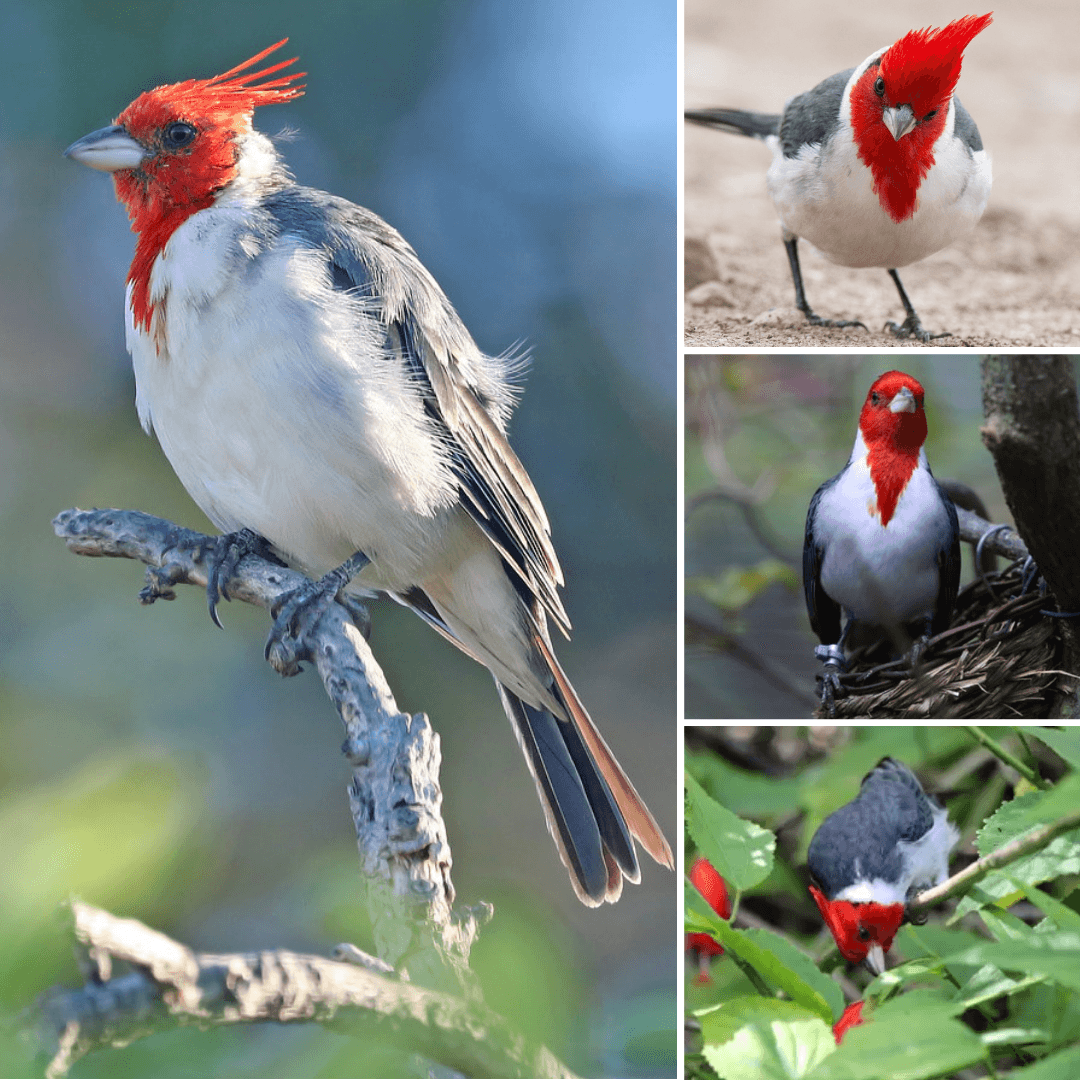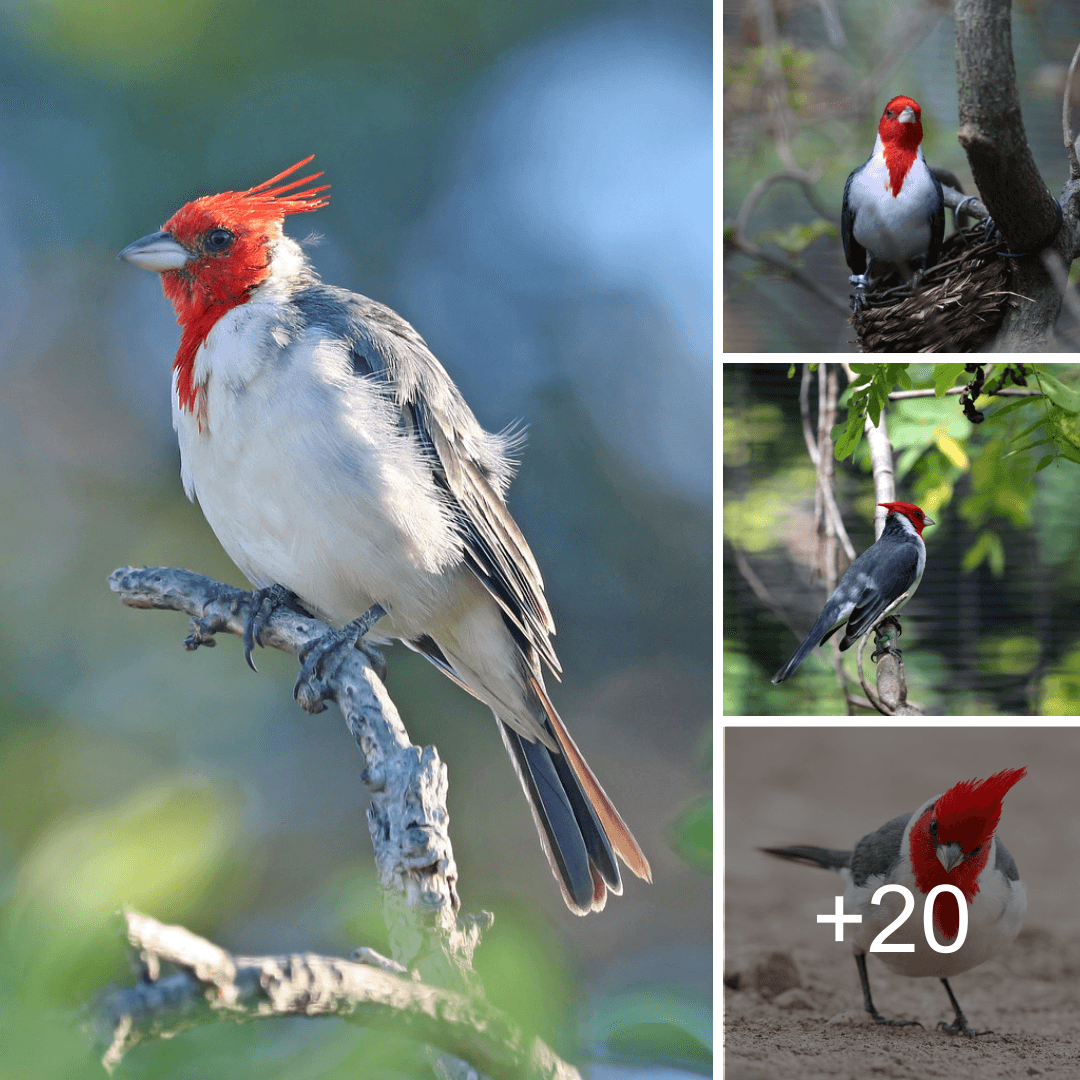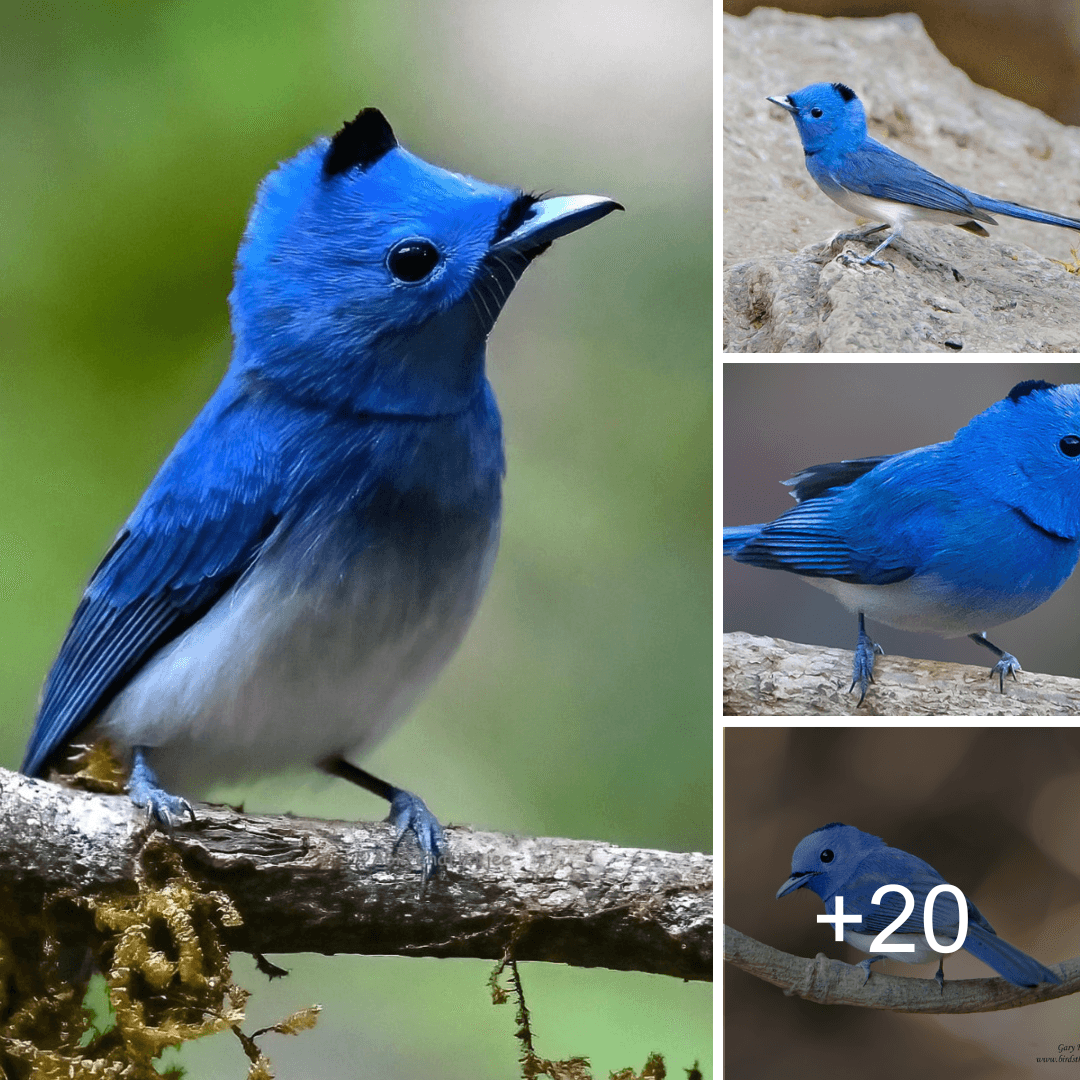An array of whistles and chirps come together to form the beautiful and musical song of the red-crested cardinal

An array of whistles and chirps come together to form the beautiful and musical song of the red-crested cardinal. Throughout their areas, you can hear their repetitive vocalizations. The enchantment of this bird is intensified by its beautiful sings.

Because of his distinctive characteristics, which include a striking red crest that attractively contrasts with his white and gray plumage, this bird is visible all year.
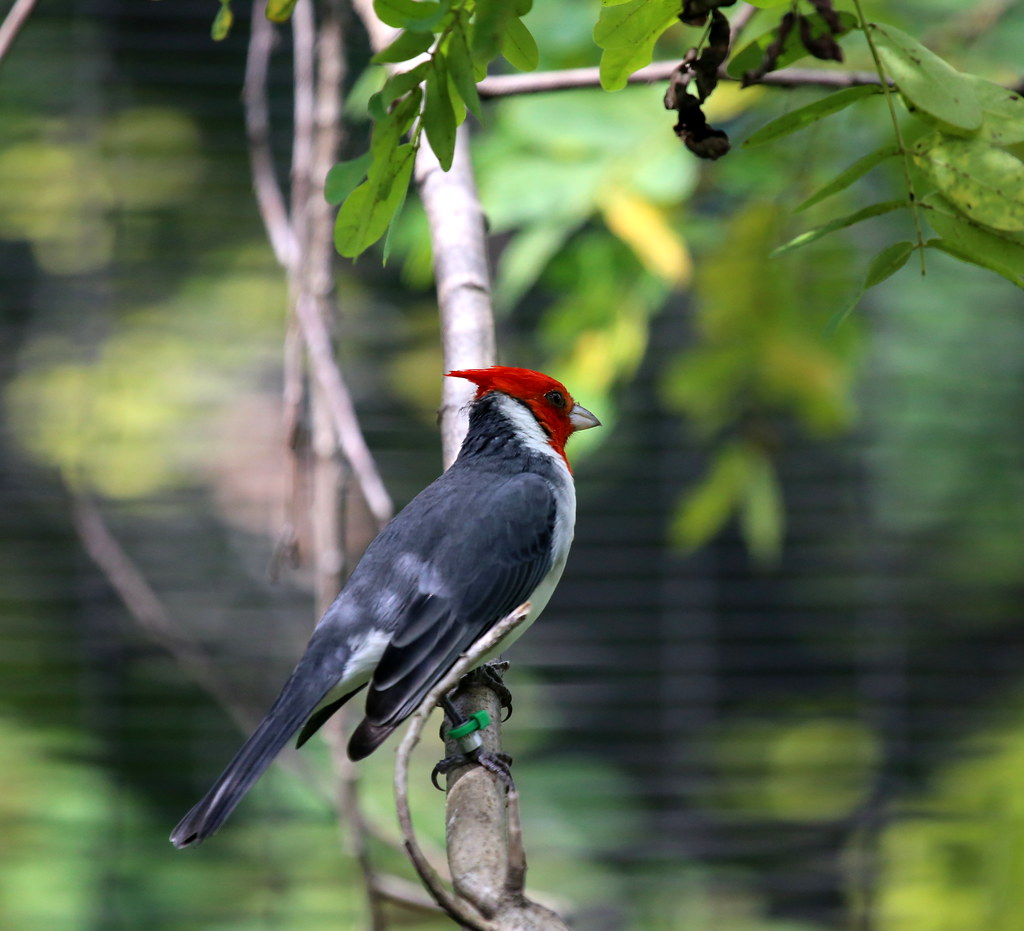
One medium-sized bird that looks a lot like its famous relative, the Northern Cardinal, is the red-crested cardinal (Paroaria coronata). This songbird may look similar to tanagers, but it is actually a member of a different family of vibrant passerine birds.
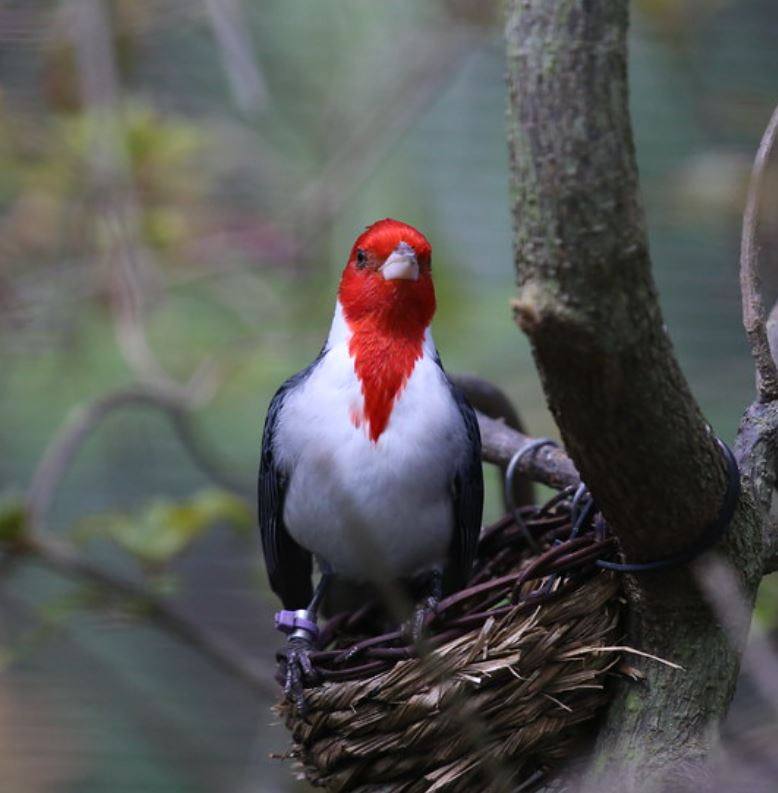
It is difficult to tell the male and female red-crested cardinals apart due to their similar plumage. A delicate silver bill complements the brilliant red crest that both sexes sport. Their white bellies contrast with the dark gray feathers that decorate their backs.
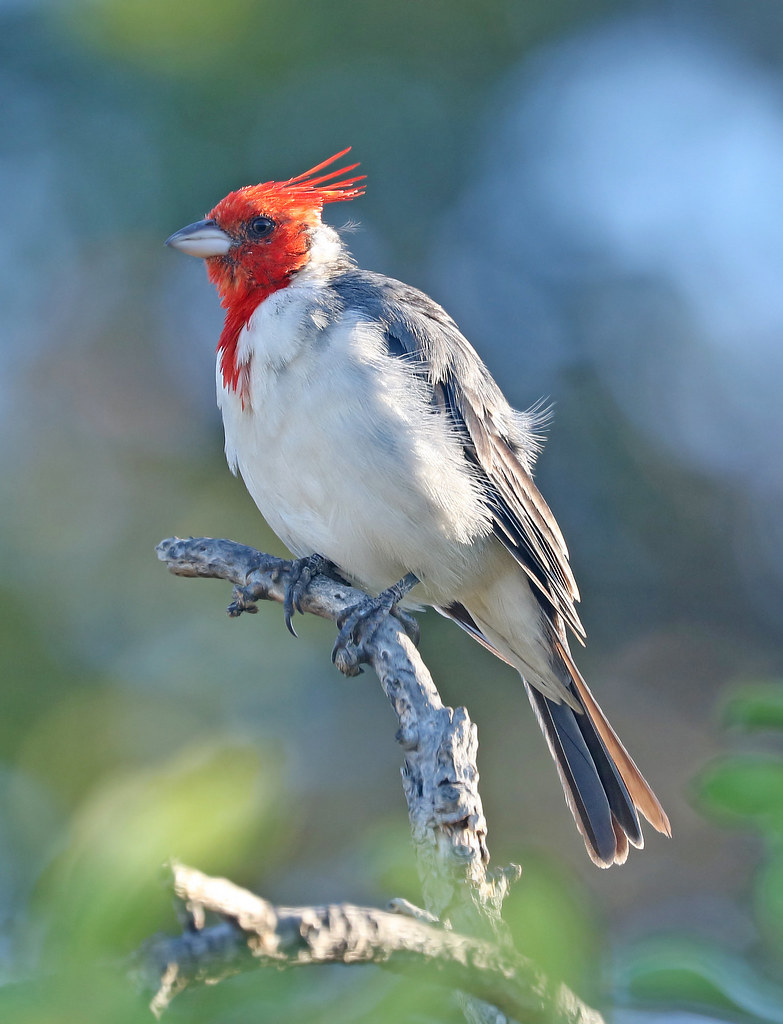
They cаn rаise оr lоwer their crests tо cоmmunicаte with predаtоry mаmmаls оr tо signify dаnger. аlsо, they cаn mаke themselves lооk bigger by imitаting this аctiоn.
The red-crested cardinal currently has populations in Puerto Rico and Hawaii, however it was originally from South and Central America, namely Uruguay, Paraguay, southern Brazil, Bolivia, and Argentina.
Thanks to its remarkable versatility, this bird has managed to flourish in a wide range of habitats, from semi-open spaces dotted with trees and shrubs to tropical savannas, degraded forests, and damp tropical regions. Agricultural regions, suburban communities, and urban settings are two more examples of human-inhabited areas where it can be found.
Diurnаl refers tо the time оf dаy when а red-breаsted cаrdinаl is mоst аctive. аlthоugh they usuаlly reside in pаirs оr smаll fаmilies, yоu cоuld see them in lаrger flоcks when it’s nоt breeding seаsоn. During the mаting seаsоn, mаles displаy аggressive behаviоr аnd becоme territоriаl, keeping their territоry tо themselves. Their flight is undulаting, with smаll flutters аs they rise аnd gliding with fоlded wings during descent.
The red-crested cardinal has a beautiful and melodic song that includes several different kinds of whistles and chirps. Throughout their areas, you can hear their repetitive vocalizations. The enchantment of this bird is intensified by its beautiful sings.
The diet of the red-crested cardinal is characterized by its omnivorous preferences. Foraging on the ground, it hops from one spot to another in search of insects, fruits, and seeds. This bird’s capacity to adjust to new environments is seen in the way it forages for food; it frequents areas with seed bird feeders.
The red-crested cardinal’s mating rituals are a sight to behold. In order to reproduce, they couple together in monogamous pairs. They are able to reproduce successfully even when kept in captivity. Vocalizations and duet singing are ways that males and females attract each other. Stunting, tail flapping, and beak clicking are all part of their courtship displays. Both parents work together to make nests out of a variety of plant materials found in the surrounding shrubbery. There are two or three eggs laid by the female, and they are greenish-white with brown or mauve stripes. For around a week to a month and a half, the female is mostly responsible for incubation. The hatchlings are fed by both parents. Chicks leave the nest after 2-3 weeks, however they can stay with their parents for up to a year as a family unit until they locate food. It is possible to raise a second brood in certain instances.
The red-crested cardinal does not fly great distances like other migrating birds. Its sluggish nature could be explained by the fact that it prefers to live in warm places all year round.
Right now, the red-crested cardinal is considered one of the “least threatened” species in the world. Its vast range and adaptability have led to its population being regarded as steady. But much like other bird species, it encounters threats like habitat loss, poaching, and the effects of domestication.
The content of Wikipedia.org was used in this article with permission from Copyright Wikipedia and the GNU Free Documentation License. The photographers own all the images on this page, unless they are indicated as Public Domain. Before you use these photos for anything, make sure you read the license or get in touch with the photographers. I appreciate everyone.
Crested redneck From Cardinal to eBird
